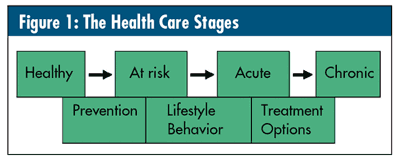Six Sigma in Health Care: A New Prescription
"First, have a definite, clear, practical ideal: a goal, an objective. Second, have the necessary means to achieve your ends: wisdom, money, materials, and methods. Third, adjust all your means to that end.”
-- Aristotle
Six Sigma isn’t a Green, Black, or any color belt. It’s not define, measure, analyze, improve, and control (DMAIC). Neither is it define, measure, analyze, design, and verify (DMADV). It’s not design for Six Sigma (DFSS). It’s not saving money. It’s not the ideal solution to every problem. Organizations that think that it is are in for a big surprise and limited success.
What, then, is Six Sigma? It’s a way of thinking, behaving, and managing. It’s a firm belief that we can all be nearly perfect, do near-perfect work all of the time, and that we have the potential to be creative. Perhaps the industry most in need of this creativity is health care. We need to think about how this definition of Six Sigma can be applied to each of the health care stages. (See figure 1.)

I’m always surprised by the number of organizations that look at Six Sigma initiatives as groups of Green and Black Belts running around solving problems. This scenario conjures a negative image. Organizations that use Six Sigma just to solve problems have limited success. Outsourcing problem solving means management doesn’t have to be accountable for change. Organizations that are the most successful in using Six Sigma as a problem-solving tool are those with the most problems to solve. However, organizations that use Six Sigma to change their cultures are the ones that reap the biggest harvests. The first type of organization measures its success on dollars saved, while the second measures how well it improves customer satisfaction.
Health care organizations have many opportunities to reduce the number of errors that occur every day and, by doing so, could save lots of money. More important are the valuable and critical opportunities to save lives. Health care professionals shouldn’t rely on a few groups of Black and Green Belts looking for project opportunities to save a million dollars. At the Six Sigma level and based on 1 million opportunities per day, a health care organization could have more than 1,200 needless deaths per year in just a single hospital. We’re lucky that not all the potential errors will result in death. The checks and balances already in place catch some of the errors, but in health care there needs to be far fewer than 3.4 defects per million critical opportunities. The goal should be closer to 3.4 defects per billion critical opportunities. This means that everyone within the heath care industry needs to be actively involved in the Six Sigma process.
Health care professionals are faced with a major problem because the specification limits on their products (i.e., patient outcomes) is very broad. A manufacturing operation has many close tolerances on all parts, which provide consistency in the process. In health care, each patient is different. They have different allergies, blood types, medical histories, and so on. It’s like having a one-of-a-kind manufacturing production line. This means that health care professionals will have to be more creative and more adaptable. All these issues contribute to the complexity and increased risk that health care professionals face each day.
Despite all of this, or maybe because of it, the health care industry must seek creative ways to apply Six Sigma concepts. In one example, at a North Carolina Baptist Hospital, a Six Sigma team attacked the problem of getting patients from the emergency department into the cardiac catheterization laboratory for treatment in the shortest time possible. They were able to reduce the cycle time by more than 41 minutes. It’s this type of result that converts skeptics into believers.
Bank of America has the right idea, notes Milton H. Jones Jr. in “Six Sigma… at a Bank?” ( Six Sigma Forum Magazine, February, 2004). Bank of America’s Six Sigma program focused on customer satisfaction and resulted in a 25-percent improvement in customer satisfaction and saved the company more than $2 billion.
“In just the medical field,” predict Peter Schwartz, Peter Leyden, and Joel Hyatt in The Long Boom (Basic Books, 2000), “bioscience will shift the health paradigm to such a degree that [within two decades] we’ll look back on the medical practices of today the way we now look back on those in medieval Europe.”
H. James Harrington is CEO of the Harrington Institute Inc. and chairman of the board of e-TQM College Advisory Board. Harrington is a past president of ASQ and IAQ. He has more than 55 years of experience as a quality professional and is the author of 28 books. Visit his Web site at www.harrington-institute.com.
|